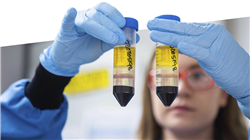University certificate
The world's largest faculty of medicine”
Introduction to the Program
Thanks to this 100% online program, you will develop critical skills to identify and address health challenges arising from environmental factors, such as pollution and climate change”

Public Health is marked by the growing concern about the effects of climate change on human health. Extreme heat waves, air pollution and loss of biodiversity are exacerbating Respiratory and Cardiovascular Diseases, and increasing the incidence of Infectious Diseases.
This is how this program is born, which will analyze the relationship between literacy and health. Therefore, physicians will be able to collaborate with health institutions and organizations to integrate literacy in Public Health policies and programs. In addition, the concepts and fundamentals of Salutogenesis as a health promotion approach will be analyzed, and different models of health assets will be compared.
The specific challenges faced by different population groups will also be addressed, examining the health of children and adolescents, as well as preventive measures to mitigate risks. The influence of gender on health and well-being will also be examined, and the factors that influence occupational health will be discussed. It will also consider health needs in multicultural contexts and during old age, promoting functional capacity and well-being at this stage of life.
Finally, the interrelationship between health and environmental factors will be explored in depth, applying cross-cutting approaches such as “One Health”. In this sense, the risks of contaminants in drinking water and measures to ensure its quality will be addressed, as well as the dangers of recreational waters and preventive strategies for their safe use.
In this way, a high-quality, fully online program has been created to meet the unique needs of students and avoid additional inconveniences, such as travel to a physical campus and the need to adhere to pre-established schedules. In addition, the innovative learning methodology known as Relearning has been incorporated, which involves the review of key concepts for a deeper understanding of the contents.
You will acquire skills to design and implement strategies to address public health problems from an ecological perspective, crucial in the face of global challenges such as climate change and pandemics”
This Postgraduate diploma in Public and Environmental Health contains the most complete and up-to-date scientific program on the market. The most important features include:
- The development of practical cases presented by experts in Public and Environmental Health
- The graphic, schematic and eminently practical contents with which it is conceived gather scientific and practical information on those disciplines that are indispensable for professional practice
- Practical exercises where self-assessment can be used to improve learning.
- Its special emphasis on innovative methodologies
- Theoretical lessons, questions to the expert, debate forums on controversial topics, and individual reflection assignments
- Content that is accessible from any fixed or portable device with an Internet connection
You will delve into the repercussions of malnutrition, as well as the health needs of migrants and humanitarian crises, through the best teaching materials on the market, at the forefront of technology and education”
The program’s teaching staff includes professionals from the sector who contribute their work experience to this specializing program, as well as renowned specialists from leading societies and prestigious universities.
The multimedia content, developed with the latest educational technology, will provide the professional with situated and contextual learning, i.e., a simulated environment that will provide immersive education programmed to learn in real situations.
This program is designed around Problem-Based Learning, whereby the professional must try to solve the different professional practice situations that arise during the course. For this purpose, students will be assisted by an innovative interactive video system created by renowned and experienced experts.
You will immerse yourself in the factors that affect mental health, developing strategies for its promotion, prevention and treatment, thanks to an extensive library of innovative multimedia resources"

You will address the prevention of Legionella, vector control and the diseases they transmit, as well as the reduction of exposure to natural radioactivity, especially radon"
Why study at TECH?
TECH is the world’s largest online university. With an impressive catalog of more than 14,000 university programs available in 11 languages, it is positioned as a leader in employability, with a 99% job placement rate. In addition, it relies on an enormous faculty of more than 6,000 professors of the highest international renown.

Study at the world's largest online university and guarantee your professional success. The future starts at TECH”
The world’s best online university according to FORBES
The prestigious Forbes magazine, specialized in business and finance, has highlighted TECH as “the world's best online university” This is what they have recently stated in an article in their digital edition in which they echo the success story of this institution, “thanks to the academic offer it provides, the selection of its teaching staff, and an innovative learning method aimed at educating the professionals of the future”
A revolutionary study method, a cutting-edge faculty and a practical focus: the key to TECH's success.
The most complete study plans on the university scene
TECH offers the most complete study plans on the university scene, with syllabuses that cover fundamental concepts and, at the same time, the main scientific advances in their specific scientific areas. In addition, these programs are continuously being updated to guarantee students the academic vanguard and the most in-demand professional skills. In this way, the university's qualifications provide its graduates with a significant advantage to propel their careers to success.
TECH offers the most comprehensive and intensive study plans on the current university scene.
A world-class teaching staff
TECH's teaching staff is made up of more than 6,000 professors with the highest international recognition. Professors, researchers and top executives of multinational companies, including Isaiah Covington, performance coach of the Boston Celtics; Magda Romanska, principal investigator at Harvard MetaLAB; Ignacio Wistumba, chairman of the department of translational molecular pathology at MD Anderson Cancer Center; and D.W. Pine, creative director of TIME magazine, among others.
Internationally renowned experts, specialized in different branches of Health, Technology, Communication and Business, form part of the TECH faculty.
A unique learning method
TECH is the first university to use Relearning in all its programs. It is the best online learning methodology, accredited with international teaching quality certifications, provided by prestigious educational agencies. In addition, this disruptive educational model is complemented with the “Case Method”, thereby setting up a unique online teaching strategy. Innovative teaching resources are also implemented, including detailed videos, infographics and interactive summaries.
TECH combines Relearning and the Case Method in all its university programs to guarantee excellent theoretical and practical learning, studying whenever and wherever you want.
The world's largest online university
TECH is the world’s largest online university. We are the largest educational institution, with the best and widest online educational catalog, one hundred percent online and covering the vast majority of areas of knowledge. We offer a large selection of our own degrees and accredited online undergraduate and postgraduate degrees. In total, more than 14,000 university degrees, in eleven different languages, make us the largest educational largest in the world.
TECH has the world's most extensive catalog of academic and official programs, available in more than 11 languages.
Google Premier Partner
The American technology giant has awarded TECH the Google Google Premier Partner badge. This award, which is only available to 3% of the world's companies, highlights the efficient, flexible and tailored experience that this university provides to students. The recognition as a Google Premier Partner not only accredits the maximum rigor, performance and investment in TECH's digital infrastructures, but also places this university as one of the world's leading technology companies.
Google has positioned TECH in the top 3% of the world's most important technology companies by awarding it its Google Premier Partner badge.
The official online university of the NBA
TECH is the official online university of the NBA. Thanks to our agreement with the biggest league in basketball, we offer our students exclusive university programs, as well as a wide variety of educational resources focused on the business of the league and other areas of the sports industry. Each program is made up of a uniquely designed syllabus and features exceptional guest hosts: professionals with a distinguished sports background who will offer their expertise on the most relevant topics.
TECH has been selected by the NBA, the world's top basketball league, as its official online university.
The top-rated university by its students
Students have positioned TECH as the world's top-rated university on the main review websites, with a highest rating of 4.9 out of 5, obtained from more than 1,000 reviews. These results consolidate TECH as the benchmark university institution at an international level, reflecting the excellence and positive impact of its educational model.” reflecting the excellence and positive impact of its educational model.”
TECH is the world’s top-rated university by its students.
Leaders in employability
TECH has managed to become the leading university in employability. 99% of its students obtain jobs in the academic field they have studied, within one year of completing any of the university's programs. A similar number achieve immediate career enhancement. All this thanks to a study methodology that bases its effectiveness on the acquisition of practical skills, which are absolutely necessary for professional development.
99% of TECH graduates find a job within a year of completing their studies.
Postgraduate Diploma in Public and Environmental Health
At TECH Global University, we are pleased to present our outstanding Postgraduate Diploma in Public and Environmental Health program, a unique opportunity for professionals in the medical field who wish to acquire specialized knowledge about the interaction between the environment and the health of the population. Our graduate program is offered completely online, which gives you the freedom and flexibility to study from the comfort of your home or from anywhere with internet access. This online class modality allows you to advance in your academic preparation without compromising your work and personal responsibilities. As an industry leader, we are committed to providing quality education that meets the needs and demands of today's world. That's why our program has been designed by experts in medicine and environmental health who have incorporated the latest advances and trends in the field into the syllabus.
Explore Public and Environmental Health with this online postgraduate diploma
During the course of the program, you will explore in depth a wide range of topics related to public health and the environment. These include environmental epidemiology, the impact of air pollution on health, sustainable management of natural resources, food security and mitigating the effects of climate change. You will also have the support of our expert professors, who will be available to answer your questions and provide academic guidance throughout the program. At the end of the program, you will be prepared to face current and future challenges in the field of public and environmental health, thus contributing to the well-being and sustainability of society.Take advantage of the opportunity to boost your career and make a difference in the world! Enroll today in our Postgraduate Diploma in Public and Environmental Health program at TECH Global University of Technology!
Translated with www.DeepL.com/Translator (free version)







